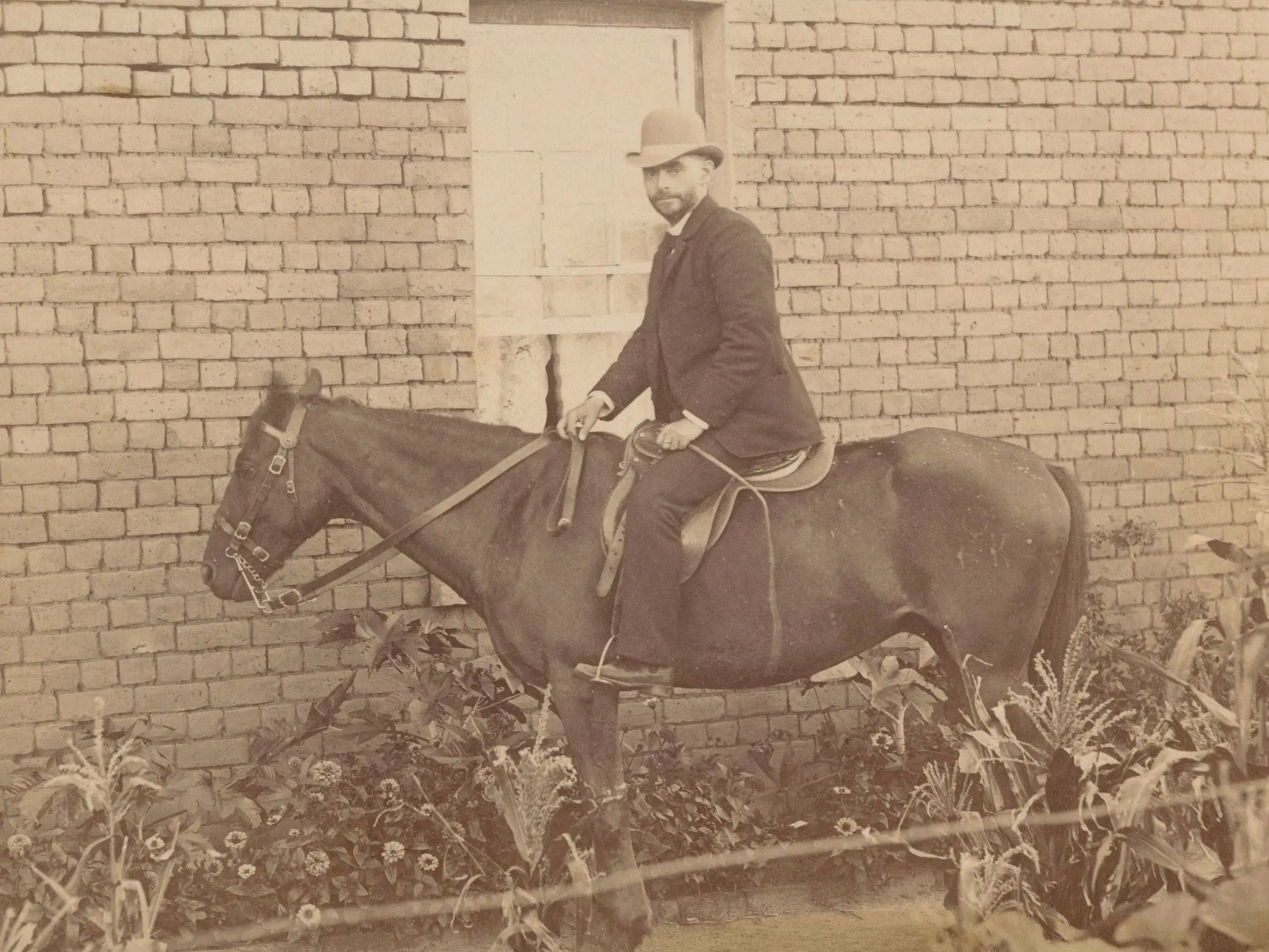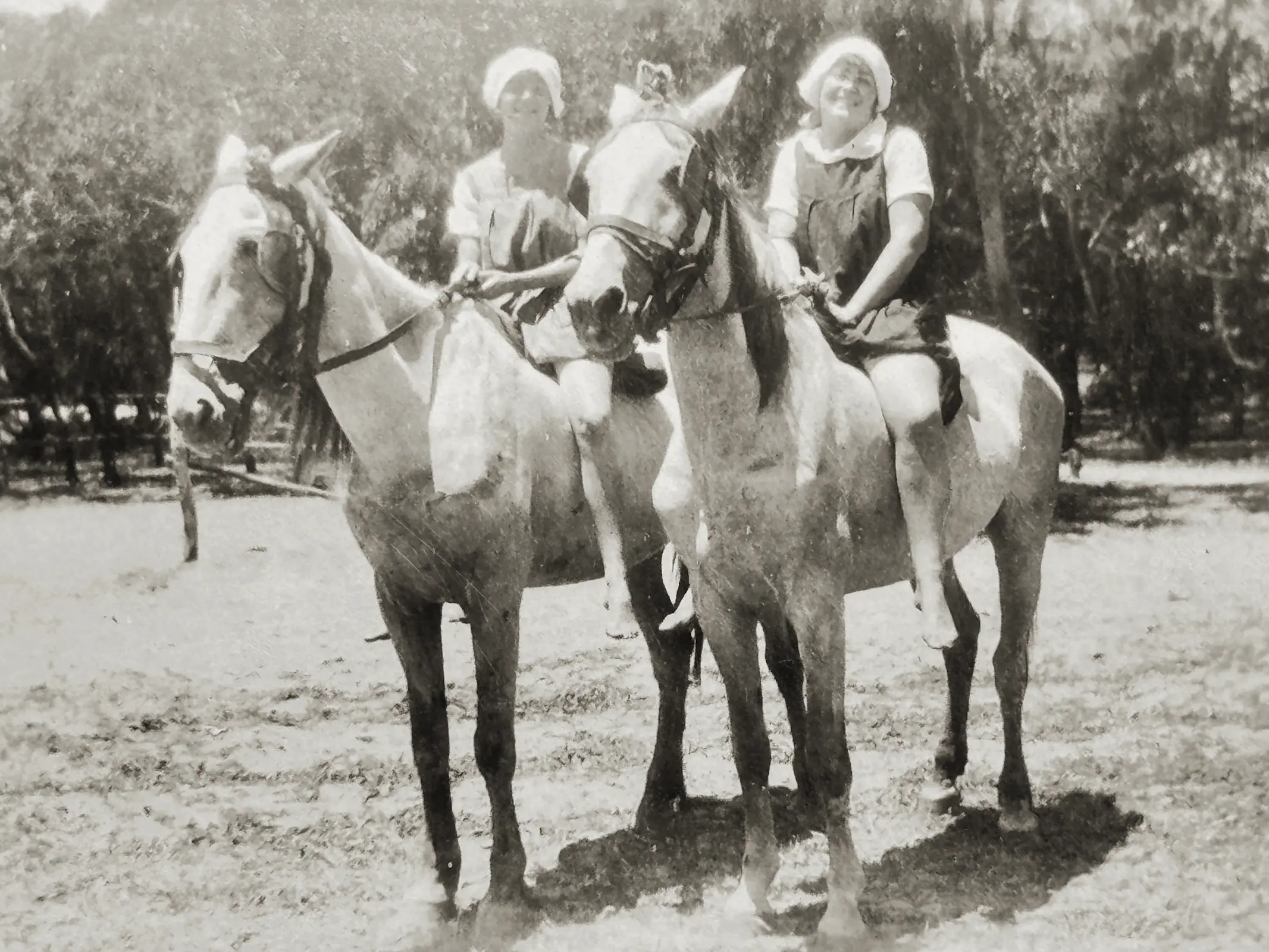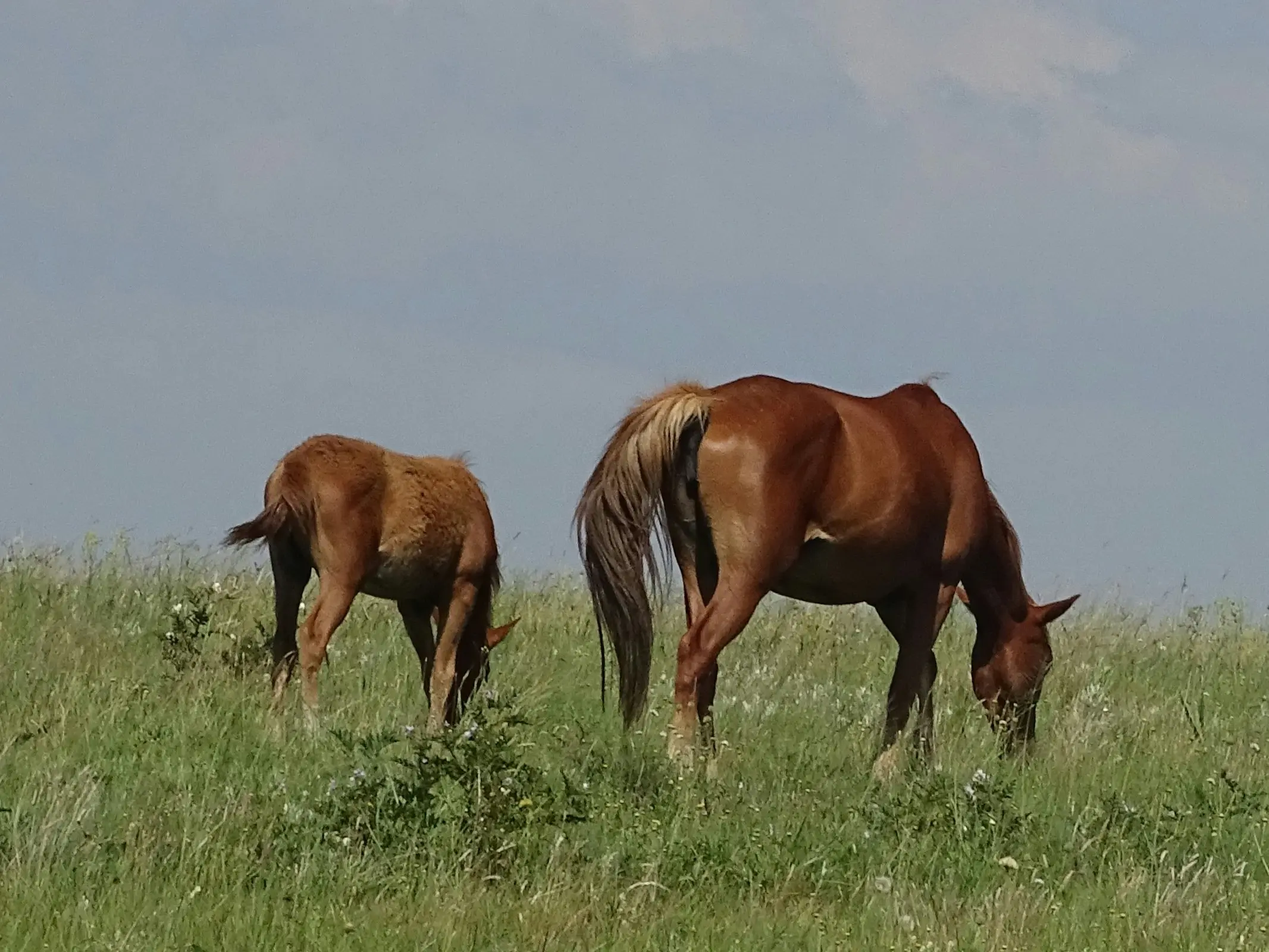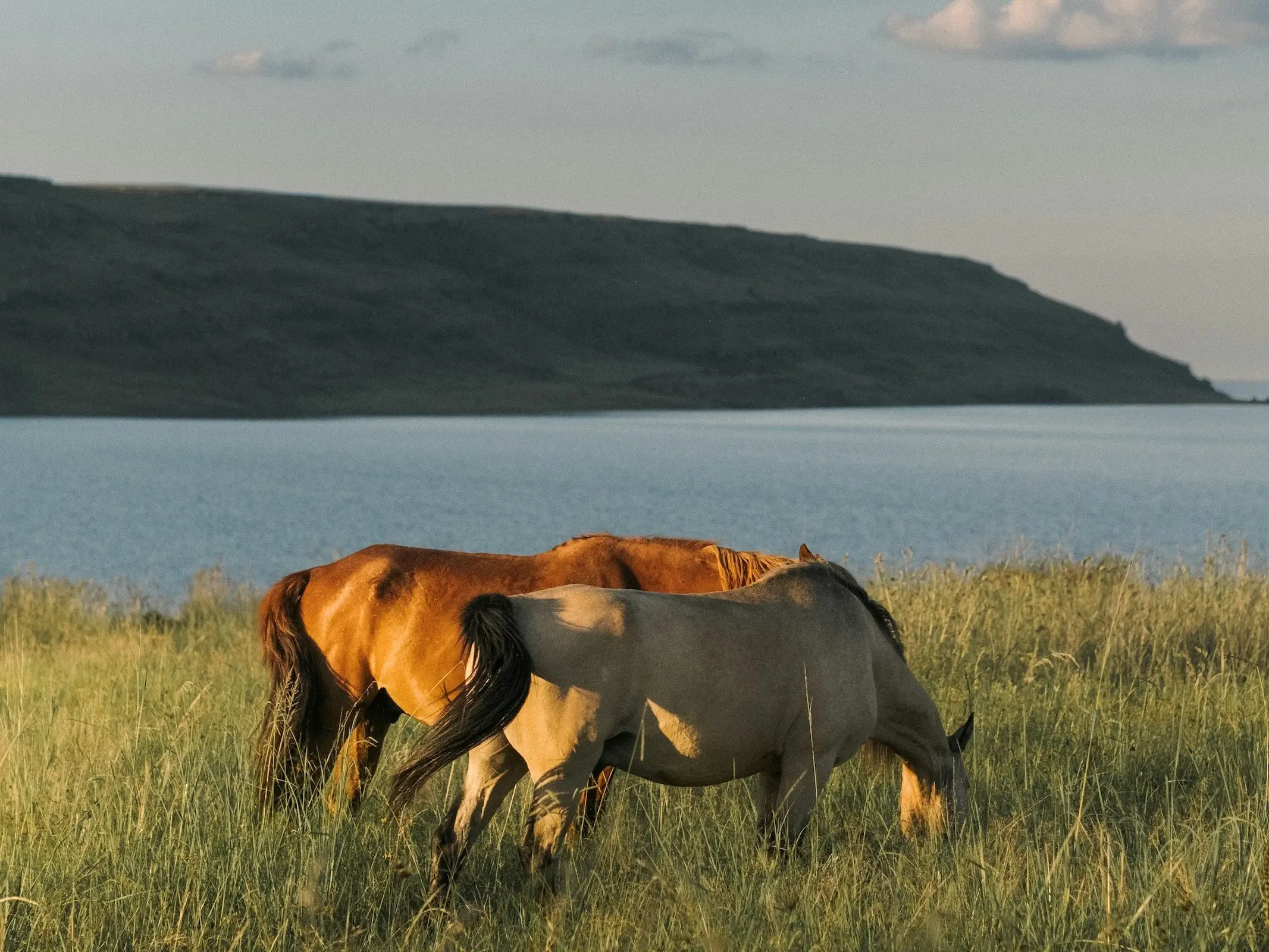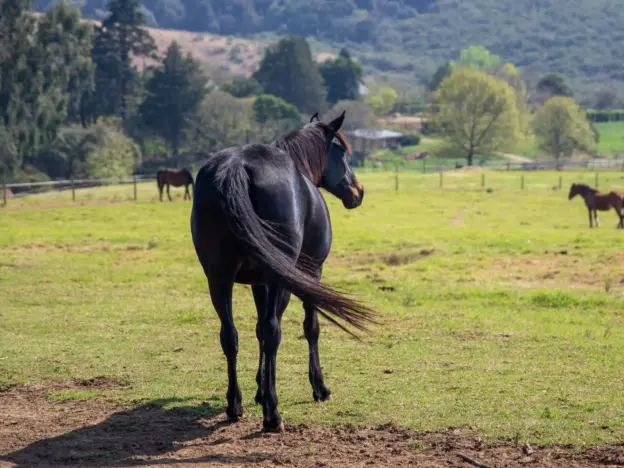Intro
Also called South African Boerperd and the Kaapse Boerperd, the Boer horse has a long history that is intertwined with the people of South Africa.
Origins
Boerperd animals trace their lineage back to the mid 17th century, when the Dutch established a post in Table Bay. The first horses imported to the Cape colony where Barb-Arabian crosses brought from Java. They didn’t start with high numbers and horse gestation is slow, so growth was challenging and inbreeding was a continuous problem.
Luckily, they were saved by a boatload of Arabians. Truly, off the coast a ship had gotten stuck en route to Persia carrying 14 Arabian horses that belonged to the Shah of Persia (some of his finest animals, too). The horses swam to shore and were captured, contributing their exquisite bloodlines to the small existing herd. This combination became what is called the Cape Horse.
Left in Isolation
For roughly a century and a half the gene pool had little outside influence, outside of 40 Thoroughbred stallions. The herd was large enough that Thoroughbred genetics didn’t leave much of a mark on the breed, aside from some size and posture. Breeding programs thrived to the point that they were providing war horses to the English army in India during the mid 18th century.
Twice in the 18th century horse populations in South Africa were affected by African Horse Sickness, killing thousands. However this tragedy provided the breed with a level of future protection from the disease, as only animals not killed by it lived to reproduce.
Boer Wars
The 19th century and the Boer Wars are what fixed characteristics for Boerperd animals. Imported Flemish, Hackney, Norfolk Trotter and Cleveland Bay stallions contributed to their genetics. The breed was tested to its limits in the wars, fighting bravely, but many were lost. Some being shot on their farms, as British soldiers tried to eliminate a Boer advantage. At the end, only those hardy enough to survive or with owners sly enough to keep them hidden from British soldiers made it through.
The 20th century saw a renewed interest in keeping this heroic breed around. Several different studbooks and associations were formed, but it wasn’t until 1973 when the Boerperd Society of SA was established. They created a breed standard and used a very strict selection process to locate suitable breeding animals. By the end of the decade, their name had changed to Historic Boerperd Breeders Society and in 1980 the breed was officially recognized.
According to the DAD-IS they are at risk and ss of 2025, there were between 250 and 405 left.
Bloodlines
There are several important bloodline strains of Boerperd animals.
Cloete Horses
Jacob Cloete was among the first Free Burger settlers in the Cape, he was a recipient of some of the original animals bred there. The Cloete family were horse breeders and took particular care to keep their bloodlines pure. During the war they lost all but two fillies, one named Ou Bes is a grandmother of this line.
A2 or van Niekerk Horses
This line comes from a stud well established by the mid 19th century, their animals known for quality. In 1879 a farmer was trekking with his sheep and horses, he stayed overnight at the stud. In the morning, one of his colts was too weak to travel, so it was sold to the stud. This colt, called David became a foundation for van Niekerk horses. The line was kept pure by the A2 stud, earning them a second name.
Hancke Horses
The Hancke family were known throughout the country for their fine grey horses. This strain in particular was appreciated by big game hunters for their stamina and endurance. During the war, this strain proved their worth and were supplied to the Boers from their herd of 700 mares. All of the strains suffered from the wars, but afterwards the branded animals were rounded up so the family could continue breeding.
Steenkamp Horses
This bloodline dates back to 1847, when breeder Willem Steenkamp and his family began a rather nomadic existence, moving their herd to various parts of the country. They finally found themselves in a perfect spot for horse breeding, the mountainous Ermelo district. Before the wars, Arabian and Thoroughbred stallions contributed genetics and this strain was known for being nimble and sturdy mounts. The war took its toll on this strain as well and by 1934 they were almost extinct, although a few persisted.
Odendaal Horses
A strain already established by the war in 1899, H.P. Odendaal was known for his horses. By the end of it he was left with 6 mares and a stallion he’d kept hidden in the mountains of Witsieshoek. In 1912 he began selectively purchasing more stallions and breeding start again. Over time, breeding changed hands until finally the stud closed. In 1980, Mr. Mof Grimbeeck discovered a stallion and a couple of chestnut mares, so he kept the bloodlines alive, luckily finding other mares as well. Today the strain is known for their chestnut or palomino coat and fifth gait.
Middleton Horses
This strain comes from Ficksburg and Fouriesburg, sought after for their endurance and renown for their black coat. The cattle breeding Middleton family began breeding horses during the Anglo-Boer War, starting with a grey mare and her black colt. Horse traders in the area crossed the Caledon River into Lesotho near their farm and Middleton purchased mares from them. After the war, Middleton mostly bred for his personal use, breeding for a sure footed riding horse. His careful breeding practices made this strain popular as police mounts. It was also a Middleton horse that made the Long Ride to Munich, showing their robust nature. This strain has very few registered stallions today.
Streicher Horses
A newer strain, Thys Streicher purchased two Nooitgedacht mares for his sons in 1973. At first they were bred to a Nooitgedacht stallion and while the young men were impressed with their temperament, they wanted a better riding horse. They brought in more local stallions and set about growing their herd. This strain is known for their lively movement, fine temperament and for being a comfortable ride.
Namib Horse
The origins of Namib Horses are controversial, but however they came to be they are likely a cross between local African and European animals. The harsh landscape has shaped a robust horse, but the conditions keep numbers very low. In 2001, there were only 96 left and then only 34 of them were mares. So off were their numbers, there were boys-only herds of stallions. These excess stallions have contributed their own strain of Boerpard and the crosses produce reliably good results. Interestingly, this feral animal of unknown origin has established themselves among the SA Boerperd strains.
Features
Average height 14 – 16 hands
Physique
Head has flat forehead and prominent eyes profile is straight or slightly concave
Neck is average length and well-formed
Legs are strong, dry and muscular
Hooves are hard and sound
Traditional Colors
All colors
Temperament
Trustworthy and alert
Sound temperament
Brave and intelligent
Calm and ambitious
Use
Agriculture work
Endurance horse
Cavalry
Helpful Links
*All links open in a new window
SA Boerpard
Cape Boerperd Breeders Society
More Images
